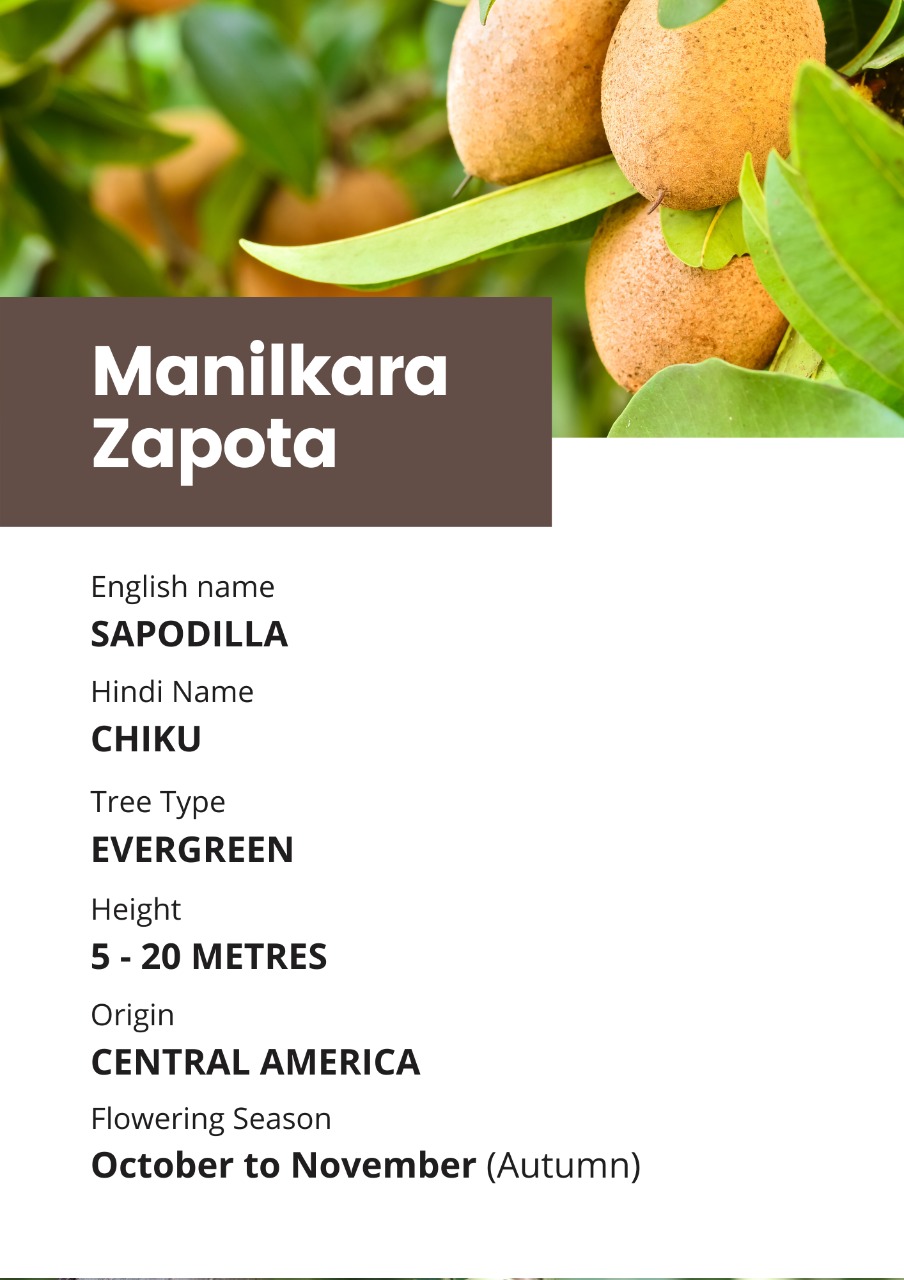
SAPODILLA
Manilkara zapota (Chiku):
Family: Manilkara zapota belongs to the Sapotaceae family.
Common Name: It is commonly known as sapodilla or chiku in Hindi.
Flowering period: It flowers in the autumn season from October to November.
Habitat: Although it is native to Central America, Mexico and the West Indies, it is now cultivated in numerous tropical and subtropical regions throughout the world.
Uses: A sapodilla leaf decoction is taken for fever, haemorrhage, wounds and ulcers. Tannin from the bark is used to cure diarrhoea and fever. The fruit is eaten as a remedy for indigestion and diarrhoea. Seeds are antipyretic, and when ground with water they act as a diuretic.
Key features: Sapodilla is an evergreen tree which usually grows 5-20m tall. The tree has a round, dense crown and India is now one of the largest producers of the sapodilla (chiku) fruit. The wood of the tree is wind resistant and the bark is rich in a white, gummy latex called chicle. It has medium green and glossy leaves which grow in an alternate pattern and are elliptical or ovate in shape. The tree also has inconspicuous white coloured flowers. They have a bell-like shape and six lobed petals. Unripe fruits have a thick outer skin and chicle is released from the stem when they are picked. Ripe fruits, on the other hand, have a saggy skin and do not release any chicle when picked. The sapodilla tree bears fruit twice a year.